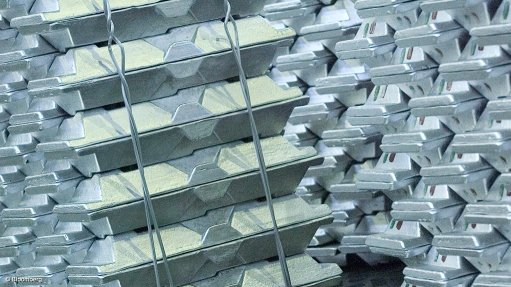On-The-Air (05/05/2023)
Every Friday, SAfm’s radio anchor Sakina Kamwendo speaks to Martin Creamer, publishing editor of Engineering News & Mining Weekly. Reported here is this Friday’s At the Coalface transcript:
Kamwendo: Gauteng’s biggest gold mine is to get wind energy in addition to solar power. Tell us about that.
Creamer: This is South Deep. It is a massive gold mine in Gauteng that will be there for another half century. It’s already got 50 megawatts of sun power, which has helped it immensely during the load shedding here. Now, it wants 30 megawatts to 40 megawatts of wind energy. Who thought of wind energy in Gauteng?
They have been checking on the wind through meteorological research. They find that there is good wind potential along our historic gold Reef, and they are looking at installing wind turbines to help them meet the mine’s total electricity requirement. This means that they will have both sun energy and they will have wind energy. Already this year, just through the sun energy alone, they are going to save something like R160-million to R170-million in electricity payments to Eskom, so generating one’s own solar power and wind power represents a massive business case. All over we are seeing that mines can actually do their own energy job, but with a business case. They are saving a lot of money. I think we’re on the brink of a massive change in the way mines are energised in South Africa.
Kamwendo: And big mining companies are also funding education in Africa.
Creamer: This is two big companies. The one, Barrick, is listed in Canada but is led by a South African. Then we have got Anglo American as well, which is listed in London, but which is also led by a South African, and which is exploring in Zambia. Exploration is what we need in South Africa. Anglo is exploring in Zambia. So what does it do? It helps an education initiative in the rural area where it is exploring, and particularly girls are being helped. We see the same with Barrick.
The Canadian mining company is putting $30-million, that is R600-million, into education in Tanzania. We saw pictures of the Barrick CEO shaking hands with the President of Tanzania this week. They are really going nationwide on assisting with education in Tanzania. Getting exploration going here in South Africa would mean mines would pay a lot more attention to the rural areas and even if they didn’t build a mine after exploring, you will have schools supported there, which is of huge benefit.
Kamwendo: South Africa’s public and private sectors are collaborating to promote green hydrogen.
Creamer: It's great to see public and private sector collaboration in South Africa. South Africa has got a pretty solid private sector and at the other end of it, we have got solid government departments such as the Department of Science and Innovation. The Department of science and Innovation is very active in green hydrogen, globally, and they need to lift their game here so that we know more about what they are doing. It was great to see them on site at the rich Mogalakwena platinum group metals mine in Limpopo, promoting green hydrogen and saying, “we want to take this collaboratively with the Anglo American group right throughout Africa”.
There is a massive potential for green hydrogen going through Africa. We have got the platinum group metals, which can assist to such a huge extent. At the same time, we see micro grids being mentioned. South Africa has got its national electricity grid, and people are talking now about creating micro grids, using all the renewable energy, using the green hydrogen, to energise areas. The concept can be taken all the way through Africa, and it'll be great for South Africa to lead that.
Kamwendo: Thanks very much. Martin Creamer is publishing editor of Engineering News & Mining Weekly.
Comments
Press Office
Announcements
What's On
Subscribe to improve your user experience...
Option 1 (equivalent of R125 a month):
Receive a weekly copy of Creamer Media's Engineering News & Mining Weekly magazine
(print copy for those in South Africa and e-magazine for those outside of South Africa)
Receive daily email newsletters
Access to full search results
Access archive of magazine back copies
Access to Projects in Progress
Access to ONE Research Report of your choice in PDF format
Option 2 (equivalent of R375 a month):
All benefits from Option 1
PLUS
Access to Creamer Media's Research Channel Africa for ALL Research Reports, in PDF format, on various industrial and mining sectors
including Electricity; Water; Energy Transition; Hydrogen; Roads, Rail and Ports; Coal; Gold; Platinum; Battery Metals; etc.
Already a subscriber?
Forgotten your password?
Receive weekly copy of Creamer Media's Engineering News & Mining Weekly magazine (print copy for those in South Africa and e-magazine for those outside of South Africa)
➕
Recieve daily email newsletters
➕
Access to full search results
➕
Access archive of magazine back copies
➕
Access to Projects in Progress
➕
Access to ONE Research Report of your choice in PDF format
RESEARCH CHANNEL AFRICA
R4500 (equivalent of R375 a month)
SUBSCRIBEAll benefits from Option 1
➕
Access to Creamer Media's Research Channel Africa for ALL Research Reports on various industrial and mining sectors, in PDF format, including on:
Electricity
➕
Water
➕
Energy Transition
➕
Hydrogen
➕
Roads, Rail and Ports
➕
Coal
➕
Gold
➕
Platinum
➕
Battery Metals
➕
etc.
Receive all benefits from Option 1 or Option 2 delivered to numerous people at your company
➕
Multiple User names and Passwords for simultaneous log-ins
➕
Intranet integration access to all in your organisation



















